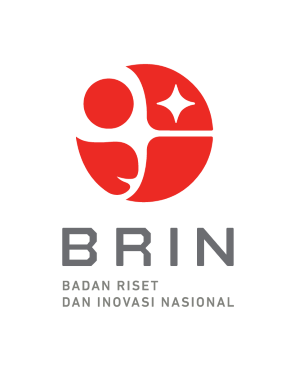KONDISI UDANG DAN AIR PEMELIHARAAN SEBELUM MUNCUL PENYAKIT EHP DI UDANG TAMBAK TRADISIONAL
Abstract
Shrimp cultivation in Indonesia is still a lot that implements the traditional shrimp farming system. Traditional shrimp ponds often experience death due to infection with various pathogens, and one of these diseases is EHP or called white peces disease (WFD) because the shrimp droppings are white and floating on the surface of the pond water. So far, shrimp diseases caused by EHP can only be anticipated with preventive measures including selection of superior seeds, increasing shrimp immunity and good aquaculture management. Therefore, it is very necessary to have a prevention effort by carrying out early warning and monitoring of the presence of the disease during the shrimp farming period. Until now, there is still lack of information regarding the description of environmental conditions and shrimp conditions before cases of EHP infection occurred in traditional pond shrimp. Presence of initial information is very important for cultivators in determining the steps to be taken so as not to experience large losses. Therefore, it is important to carry out this research or engineering activity to get a picture of the condition of shrimp and the environment of traditional ponds before EHP infection is detected. The results obtained showed that cases of EHP infection in vannamei shrimp in traditional ponds were characterized by a decrease in the uniformity of shrimp weight to only 20%. There was an increase in cases of filamentous bacterial infection by up to 50%, the temperature and pH of pond water continued to fall along with the length of maintenance
References
Effendi E. 2003. Telaah kualitas air. Penerbit PT. Kanisius. Yogyakarta
Haliman, R.W. dan Adijaya, D. 2005. Udang Vannamei. Penebar Swadaya. Jakarta.
Hanggono B. dkk. 2019. Deteksi Cepat Enterocytozoon hepatopenaei (EHP) Pada Udang Vaname (Penaeus vannamei). Jurnal Perekayasaan Budidaya Air Payau dan Laut. Balai Perikanan Budidaya Air Payau Situbondo. No. 14.
Komarawidjaja, W. 2006 Pengaruh Perbedaan Dosis Oksigen Terlarut (DO) Pada Degradasi Amonium Kolam Kajian Budidaya Udang, Jurnal Hidrosfir.1, 1, 32-37.
Kusworo AB. 2004. Pengelolaan Kualitas Air Pada Pembesaran Bandeng. Direktorat Pendidikan Mengengah Kejuruan, Dirjen Pendidikan Dasar dan Menengah, Departemen Pendidikan Nasional. 20-24.
Newman, S.G. 2015. Microsporidian Impacts shrimp production – industry efforts address control, not eradication. Global Aquaculture Advocate, 16- 17 March/April.
Palafox, J. P., C. A. M. Palacios and L. G. Ross. 1996. The effects of salinity and temperature on the growth and survival rates of juvenile white shrimp, Penaeus vannamei. Aquaculture 157 (1997): 107- 115.
Peraturan Menteri Kelautan Dan Perikanan Republik Indonesia Nomor 75/PERMEN-KP/2016 Tentang Pedoman Umum Pembesaran Udang Windu (Penaeus Monodon) Dan Udang Vaname (Litopenaeus Vannamei).
Pan-Lu-Quing,Fang bo Jiang Ling-Xu, and Liu-Jing. 2007. The effect of temperature on selected immune parameters of white shrimp, Litopenaeus vannamei. Journal of the World aquaculture Saciety. 38 (2), 326-332.
Suresh K. et all., 2018. Incidence of Hepatopancreatic Microsporidiasis, by Enterocytozoon hepatopenaei (EHP) in Penaeus vannamei Culture in Nellore, District, Andhra Pradesh, India and the Role of Management in its Prevention and Transmission. International Journal of Current Microbiology and Applied Sciences Volume 7 Number 02.
Tourtip, S., Wongtripop, S., Stentiford, G.D., Bateman, K.S., Sriurairatana, S.,Chavadej, J., Sritunyalucksana, K., Withyachumnarnkul, B., 2009. Enterocytozoon hepatopenaei sp. nov. (Microsporida: Enterocytozoonidae), a parasite of the black tiger shrimp Penaeus monodon (Decapoda: Penaeidae): Fine structure and phylogenetic relationships. J. Invertebr. Pathol. 102, 21-29.
Copyright (c) 2021 Hamzah Hamzah, Aswar Aswar, Supito Supito

This work is licensed under a Creative Commons Attribution 4.0 International License.










